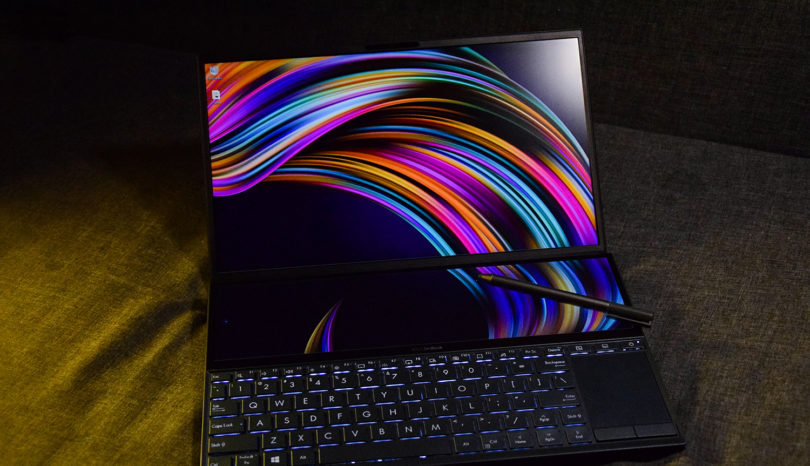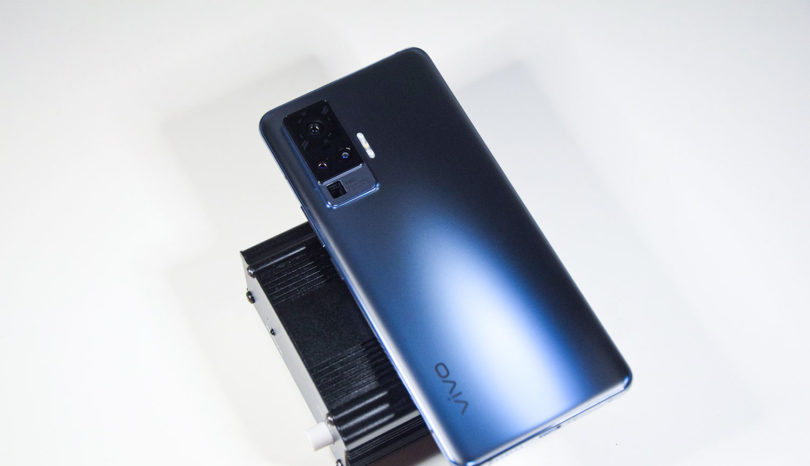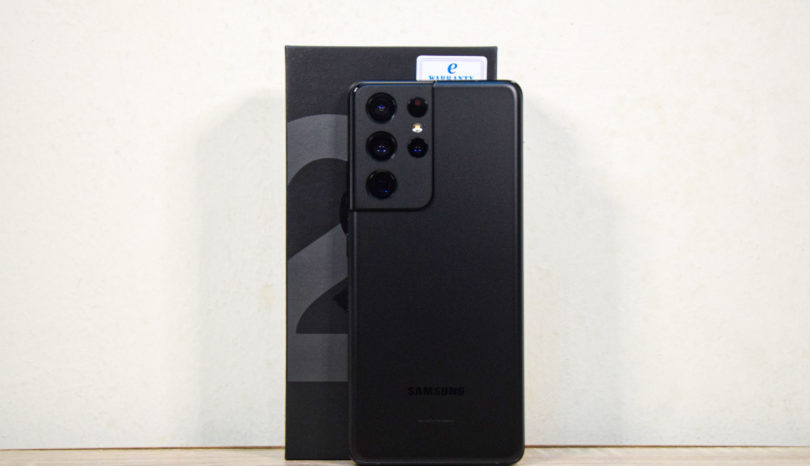Introduction
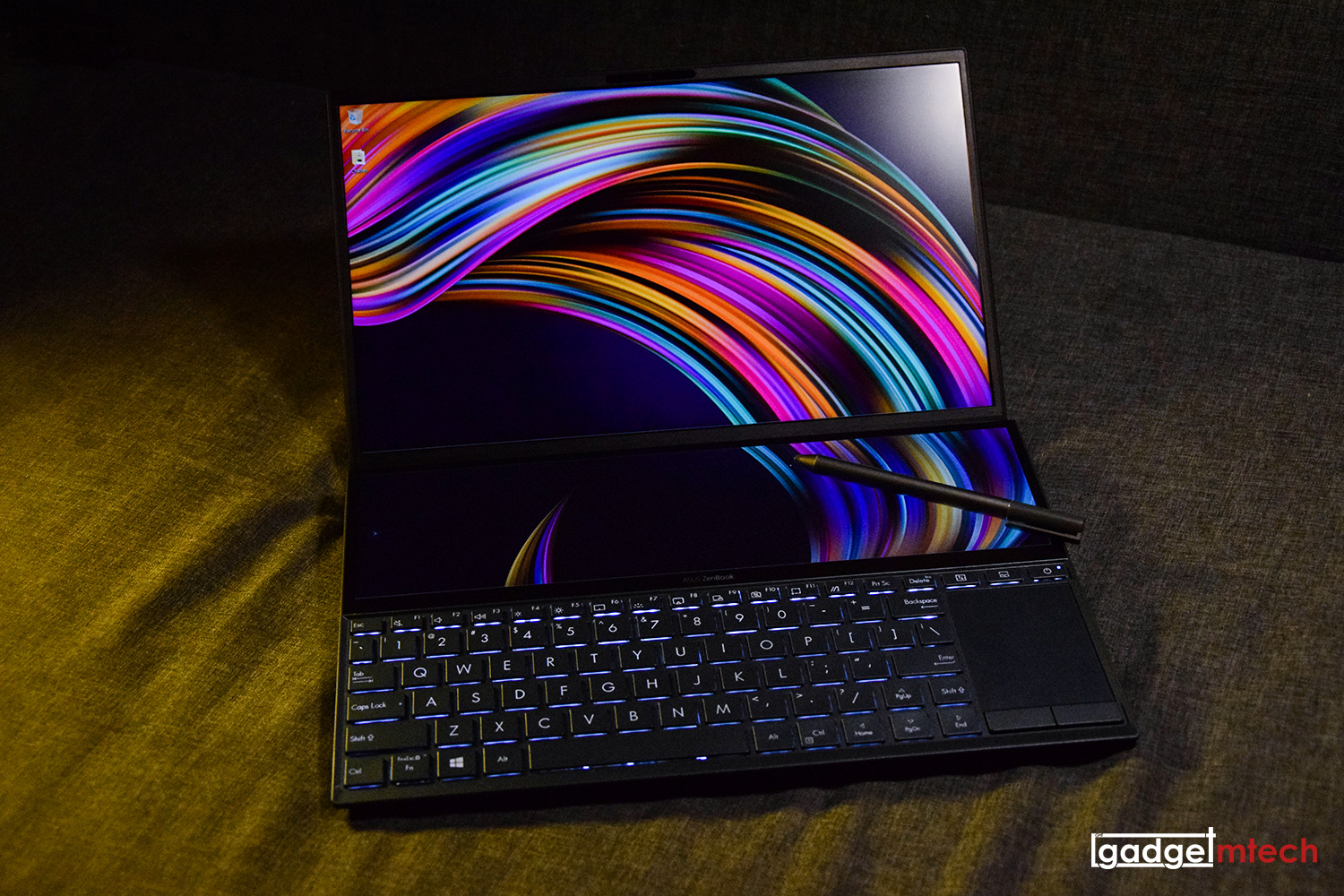
Last month, ASUS Malaysia celebrated its 30th anniversary by launching a range of new ZenBook. While many people have their eyes on the ZenBook Edition 30, there’s one particular unit that I’m really interested — the ZenBook Duo. Thankfully, ASUS Malaysia is kind enough to send us a unit to test it out. Without further ado, this is the ASUS ZenBook Duo (UX481F) review!
Unboxing
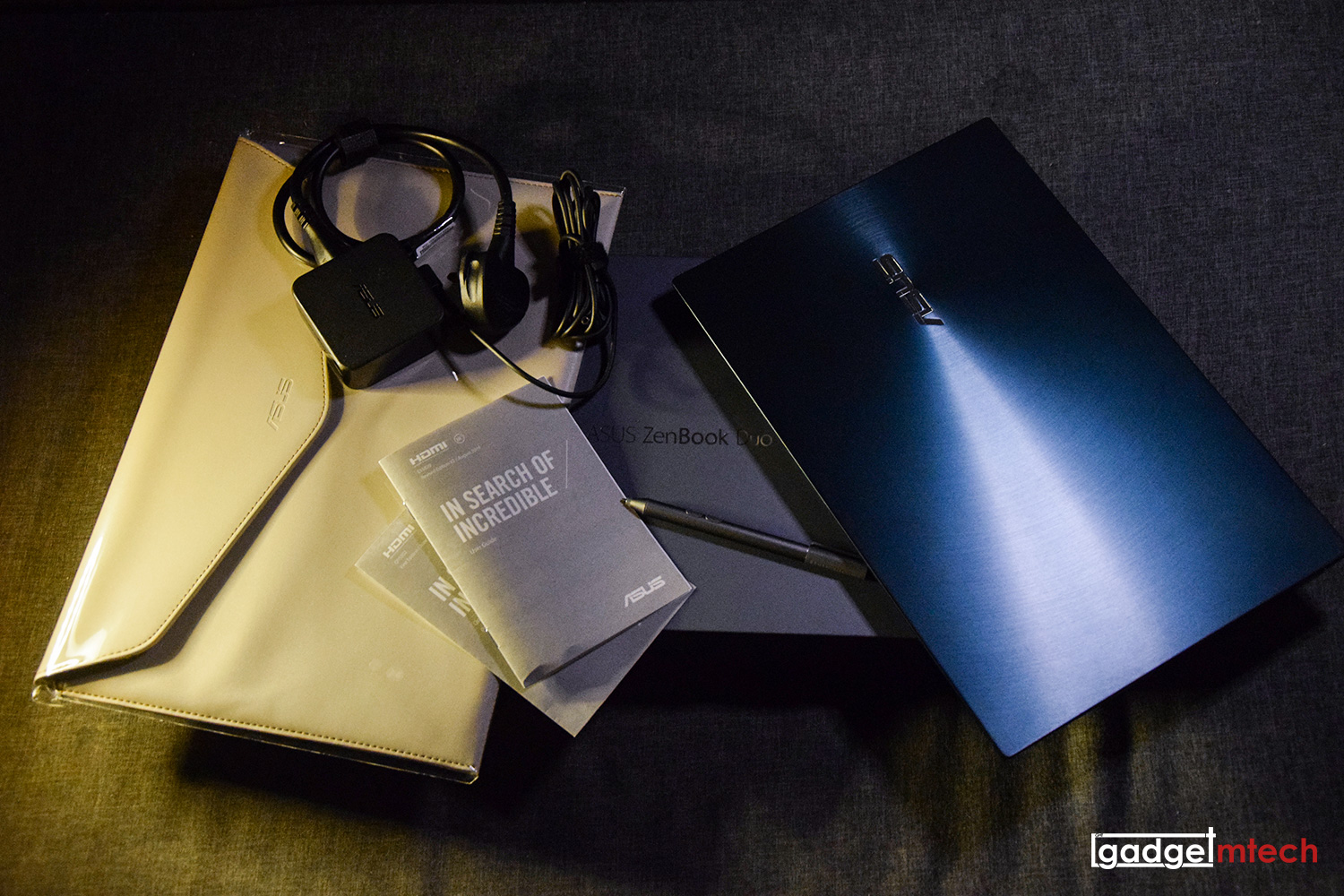
The ZenBook Duo comes in a simple and plain design packaging. Inside the box, there’s the laptop itself, power brick, ASUS Active Stylus SA200H, carrying sleeve, and paperwork. I’m actually surprised that there’s actually no extra pen tips for the Active Stylus, even my RM300 Wacom tablet comes with extra pen tips for the stylus.
Design
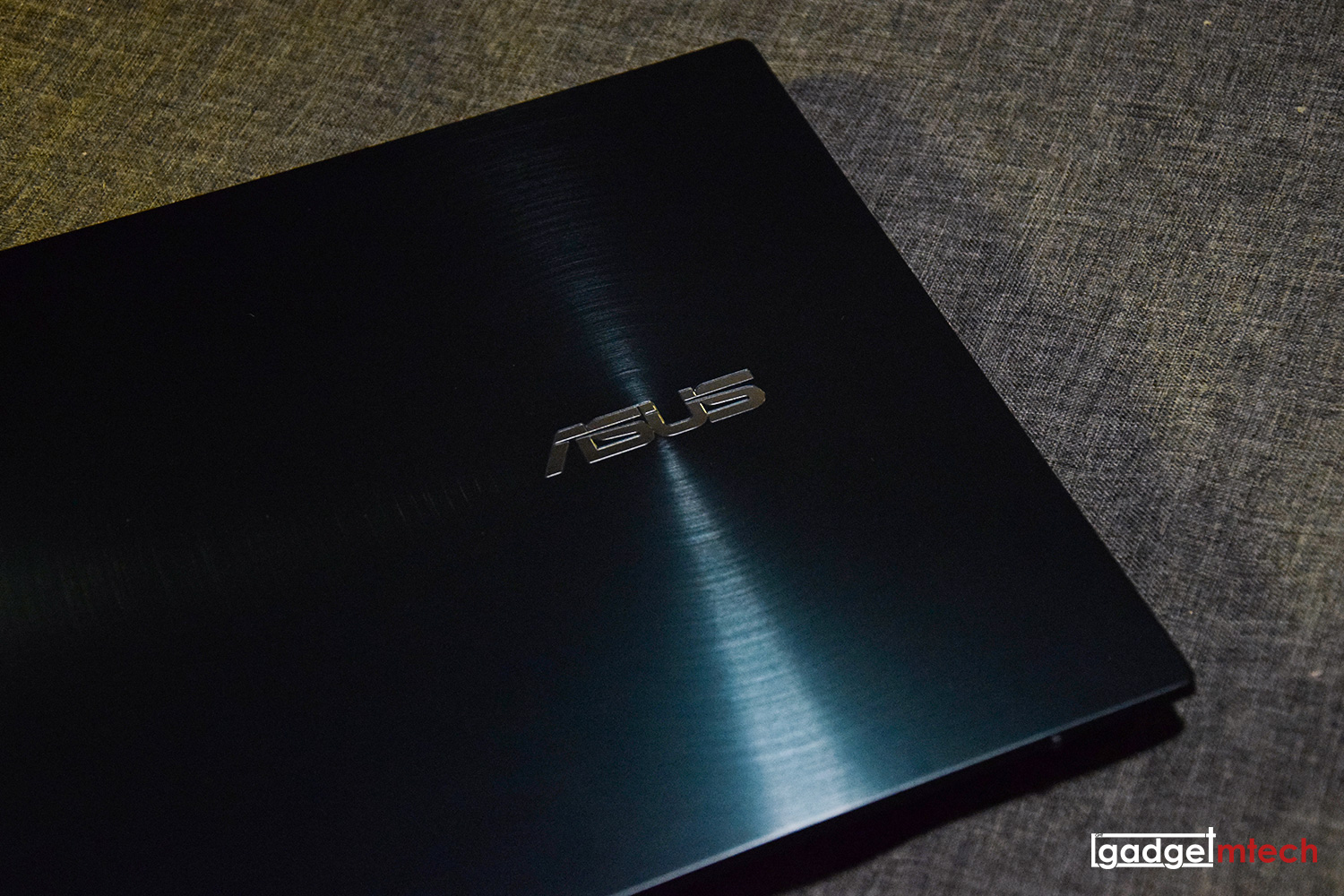
Since this is the ZenBook series, you’ll need to expect something more premium when it comes to design. As expected, the iconic ZenBook concentric circle design remains on the lid, though it’s now off-center. The laptop is only available in the Celestial Blue color option, which I really like a lot.

Like the VivoBook S15, it also comes with a redesigned ErgoLift hinge, which is now stronger and more durable for additional structural support. Weighing at only 1.5kg, this is actually quite a thick laptop at 1.99cm, but wait until you get to know about the tech inside, you’ll understand.
The right side of the laptop houses USB 3.1 Gen 1 port, 3.5mm audio jack, MicroSD card reader, battery LED indicator and power LED indicator. As for the left side, it has the power jack, HDMI port, USB 3.1 Gen 2 port, and USB-C 3.1 Gen 2 port. I’m actually quite happy with the list of the ports available here, but it would be better if ASUS has opted for a full-sized SD card reader, which is available on the Pro model.
Display
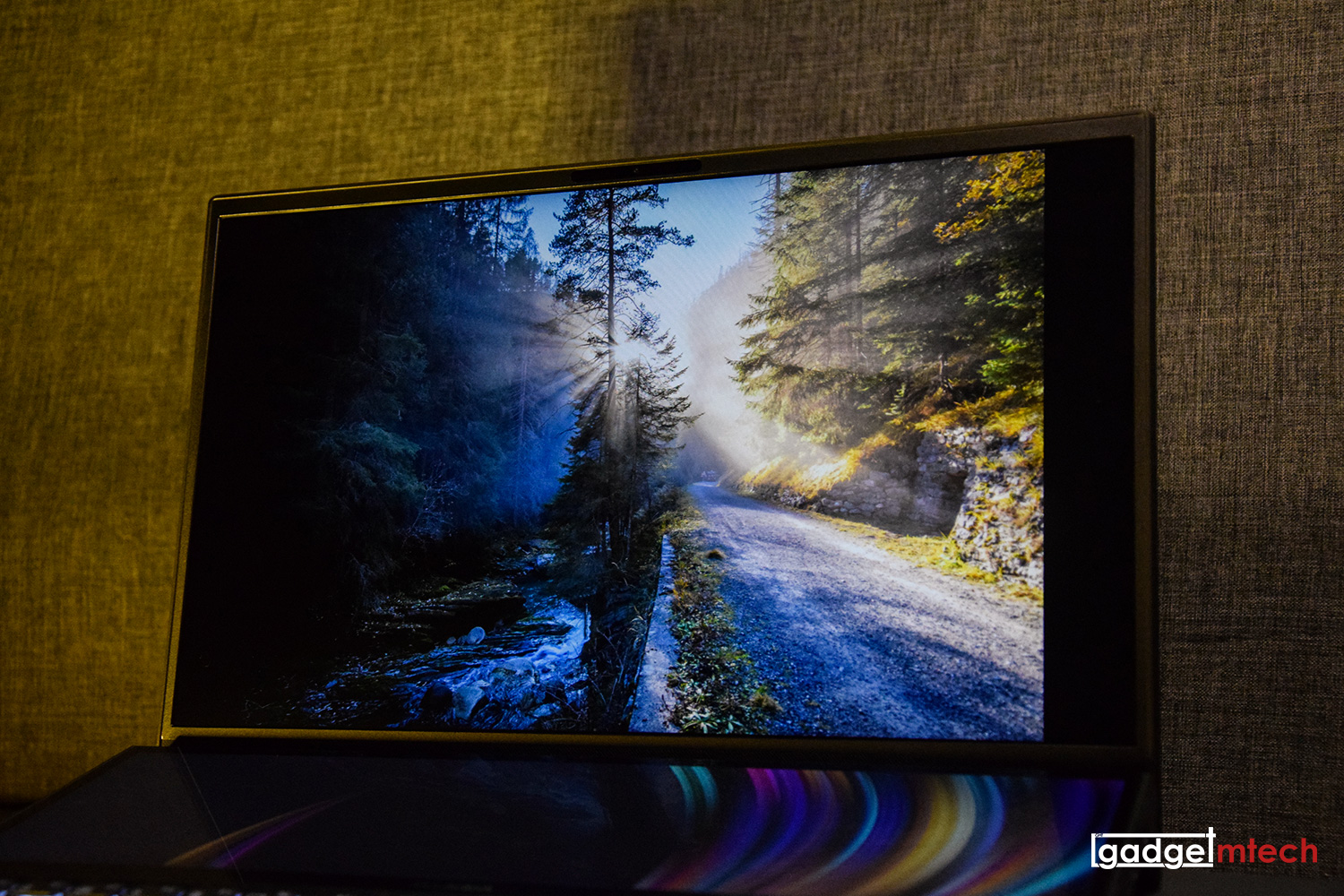
The ZenBook Duo comes with a 14-inch Full HD LED-backlit slim-bezel NanoEdge display. The screen has a good viewing angle and 100% sRGB coverage. Personally, I think it’s a good display with great color accuracy.
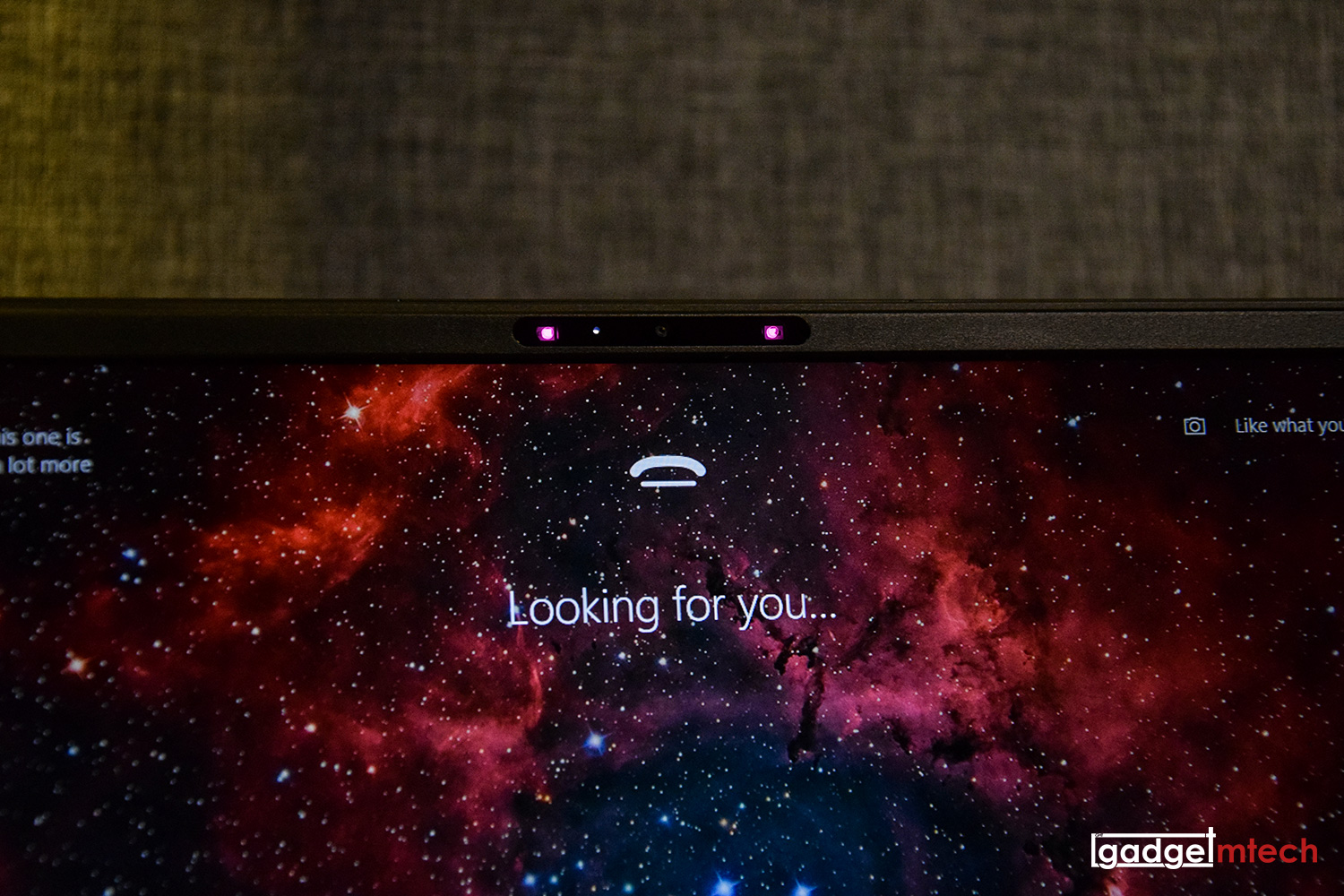
Like the VivoBook S15 (S531FL) we reviewed recently, it also comes with Windows Hello biometric facial recognition feature, which has two IR blasters in between the webcam.

The laptop also has the ScreenPad Plus, which is a secondary screen above the keyboard and trackpad. It is a touch-sensitive 12.6-inch screen with a resolution of 1,920 x 515. The screen has a rough matte finishing, which feels great to touch. It’s also a great display, but viewing angle might not be as good as the main display.
ScreenPad Plus
Speaking of the ScreenPad Plus, as I mentioned earlier, it works just like a secondary screen which also comes with touch function. During my review period, what I did the most is dragging Spotify to the ScreenPad Plus so that I can control my music playback by just touching the screen. If you are a video editor, you’ll be glad that you can use Premiere Pro timeline on the ScreenPad Plus. Additionally, you can also split the ScreenPad Plus into two halves by putting two apps on it. Some apps are actually optimized for the ScreenPad Plus, and it also comes with ScreenXpert, which has a few built-in apps like handwriting and number pad.
Here’s a problem though, even though I really like using the ScreenPad Plus, it isn’t quite user-friendly, in terms of ergonomics. Let’s use video editing as an example: When editing on Premiere Pro, I’ll have to constantly look down on the ScreenPad Plus to edit the video timeline. As many of you know, editing video takes time, and after a long time, my neck hurts. Perhaps ASUS could make the ScreenPad Plus tiltable upwards?
Since this is basically a secondary display, when I close the lid of the laptop, it will behave as the screen has been unplugged. It happens every single time when the ScreenPad Plus turns off, all arranged windows are messed up.
Keyboard and Trackpad

Moving on to the keyboard and trackpad, boy I’ll say the ScreenPad Plus does actually ruin a bit of the typing experience! The keyboard feels really good to type and it has great solid feedback, but each individual key is too small, especially the right shift key, I often pressed the wrong key when I’m typing.
I actually like the idea of putting the trackpad right next to the keyboard, I find myself using my index finger on the trackpad and thumb to click, which feels quite natural to use. A great gospel for right-handed users!
Here’s why the ScreenPad Plus actually ruined a bit of the typing experience. Since ASUS has to make space for the ScreenPad Plus, the entire keyboard layout has been shifted down, just like the ASUS ROG Zephyrus S. There’s no more space for you to rest your palm while typing, making the entire typing experience not as good as a normal laptop. ASUS could have included the palm rest in the box, and yet again, only the Pro model got it.
Performance

Our review unit is the Intel Core i7-10510U variant with 16GB RAM, NVIDIA GeForce MX250 graphics, and 512GB NVMe SSD. In terms of performance, I’m quite satisfied with how the laptop handles the tasks. Editing videos with this laptop is definitely not a big problem, and the temperature kept very well under control most of the time.
Battery Life

The ZenBook Duo has a 70Wh 4-cell lithium-polymer battery, which comes with a 65W power adapter that took 2 hours to fully charge the laptop. The battery life is impressive, surprisingly! I was able to get around 7 hours of usage time, which includes watching videos, playing music on Spotify, typing, and web browsing, all with the ScreenPad Plus turned on.
Final Words
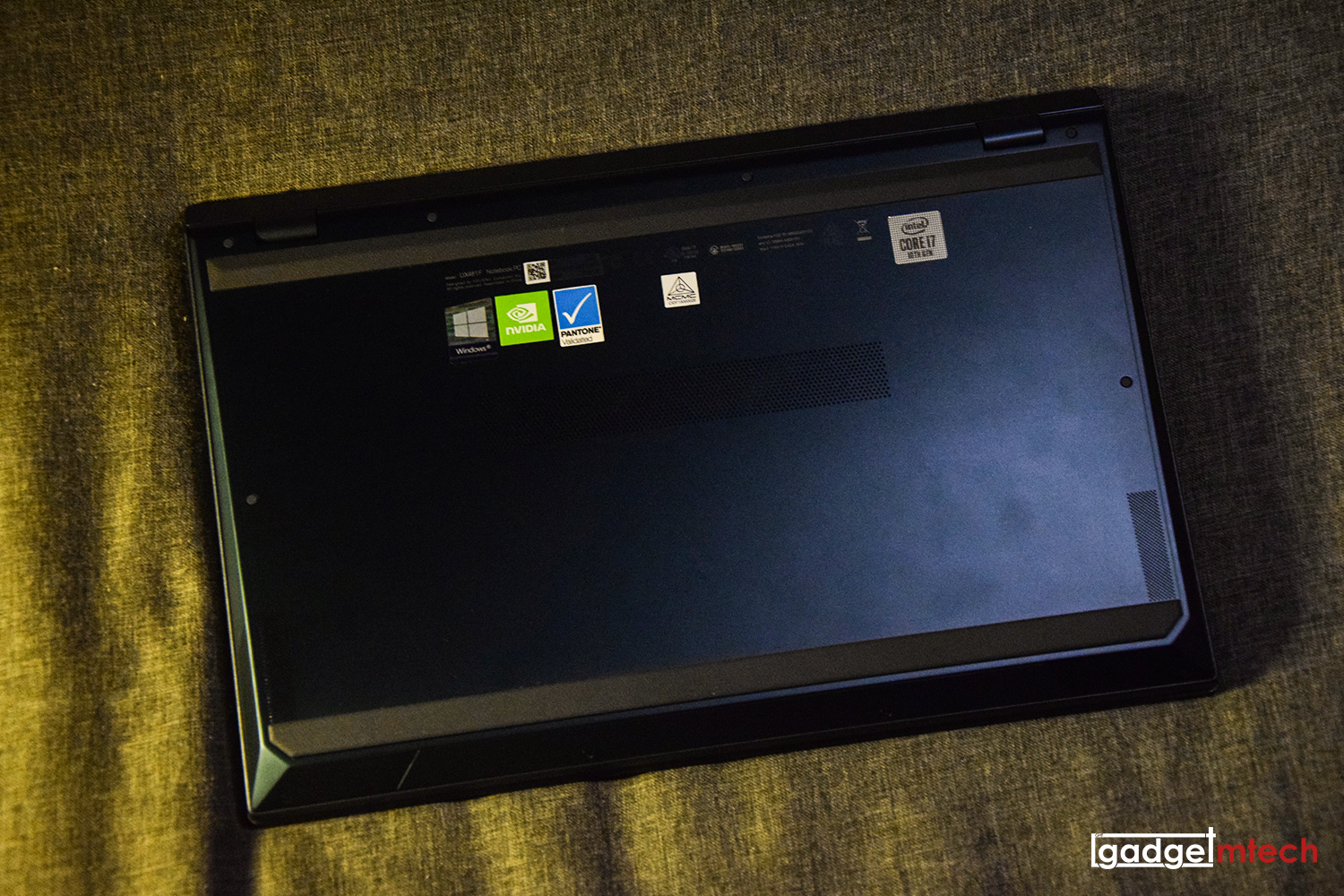
Retailing from RM4,699, the ASUS ZenBook Duo (UX481F) is a pretty unique product you can buy right now. Even though there are some flaws here and there, especially on the ScreenPad Plus, this is definitely a first-gen product that will be getting better and better in the next generation. To sum it out, this is a laptop with two screens and it has great performance and battery life. Really looking forward to the next generation product to see what ASUS can do.
Yay
- Premium build
- Great performance
- Impressive battery life
Nay
- No full-sized SD card reader
- Has a few ergonomic issues on the ScreenPad Plus
- Keyboard keys are too small

